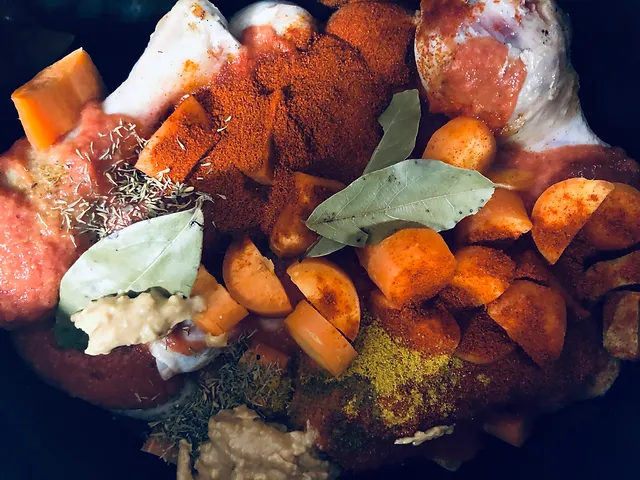Introduction: Nigerien cuisine
Nigerien cuisine is as diverse as the country’s landscape, with influences from the Saharan desert and the West African savannah. It is a blend of traditional recipes, spices, and cooking techniques that have been passed down through generations. The cuisine is characterized by its use of grains, vegetables, and meat, with a unique blend of flavors and textures.
The importance of the desert climate
The desert climate plays a crucial role in Nigerien cuisine, as it has shaped the way people have sourced, prepared, and consumed food. The aridity of the desert makes it difficult to grow crops, but the region is home to a variety of drought-resistant plants and animals that have been used in cooking for centuries. The desert also poses a challenge for preservation, as the hot and dry weather can spoil food quickly.
How the desert influenced the cuisine
The lack of water and fertile soil in the desert regions meant that people had to rely on hardy crops such as millet, sorghum, and rice. These grains are still a staple in Nigerien cuisine, and they are often ground into flour to make a variety of dishes such as fufu and tuwo. The scarcity of water also meant that people had to find alternative ways to cook food, resulting in methods such as smoking and drying. The use of spices such as ginger, cloves, and cinnamon helps to preserve the food and add flavor.
The role of nomadic culture in Nigerien cuisine
Nomadic culture has played a significant role in Nigerien cuisine, as it has influenced the way people prepare and consume food. Nomads often rely on the milk and meat of their livestock, and this has led to the creation of dishes such as fari masa (a pancake made with milk) and dambun nama (dried meat). Nomads also use a lot of herbs and spices in their cooking, such as cumin and coriander, which help to enhance the flavor of their food.
Traditional dishes and their ingredients
Some of the most popular dishes in Nigerien cuisine include jollof rice, maafe (a peanut stew), and tô (a porridge made from millet or sorghum). These dishes are often made with a blend of spices such as ginger, cumin, and chili pepper, along with vegetables and meat. Other traditional dishes include thieboudienne (a rice and fish dish), gari foto (a cassava dish), and kilishi (a form of dried meat).
Conclusion: The unique flavors of Nigerien cuisine
Nigerien cuisine is a reflection of the country’s diverse culture and landscape, with influences from the desert and nomadic lifestyle. Its use of grains, spices, and meat creates a unique blend of flavors and textures that are both savory and satisfying. Despite its challenges, Nigerien cuisine has been able to adapt and evolve over time, and it continues to be a source of pride for the people of Niger.

